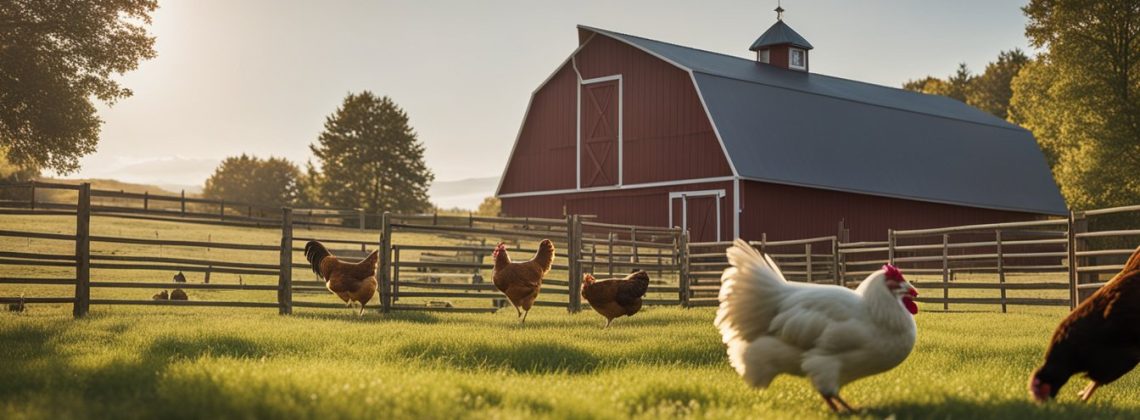
With increasing uncertainties in global food supply chains, the idea of raising your own livestock for food security is gaining traction. As a prepper or someone interested in sustainable living, you understand the value of being prepared and self-reliant. Raising livestock on your homestead not only allows you to control your food sources but also to ensure a steady supply of fresh meat, eggs, and dairy. It’s a step towards self-sufficiency that can transform your dependency on external systems into personal abundance and resilience.
Before you start building coops or fencing pastures, it’s important to grasp the essentials of livestock management and assess what kind of animals are a good fit for your space and needs. Whether you’re considering chickens for their eggs, goats for their versatility, or larger animals like cows and pigs, each species requires specific care. Acquiring knowledge through a comprehensive guide can save you from common pitfalls and guide you in optimizing your homestead for the animals you choose to raise.
Key Takeaways
- Raising livestock ensures a consistent and controlled food supply, pushing your homestead towards self-sufficiency.
- It is crucial to understand each animal’s needs and the commitment required to care for them effectively.
- A good guide is indispensable to navigate the complexities of homesteading and livestock management successfully.
Assessing Your Homesteading Needs
Before jumping into raising livestock for your prepper homestead, you’ve got to assess if you’ve got the chops for it. Let’s get your ducks in a row, focusing first on the space you have and the resources at your fingertips, then on how the climate and weather can play into your grand survival plan.
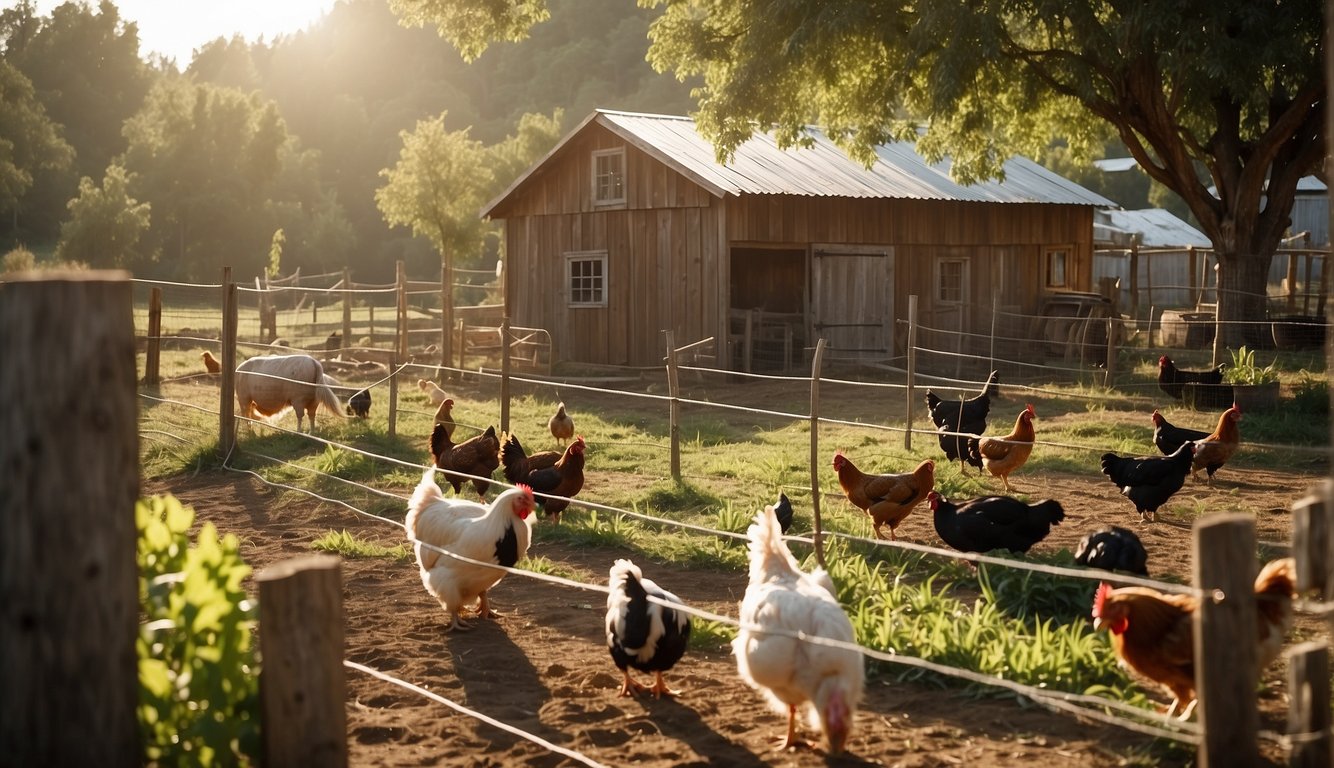
Determining Space and Resources
Alright, let’s talk turkey about space. Livestock need room to roam, grow, and be themselves, so here’s what you need to consider:
- Land Area: Get specific about how much land is available. Go ahead, measure it out.
- Forage: Do you have enough greenery for grazing or will you need to supplement with feed?
- Water Supply: Livestock drink a ton. Ensure you’ve got a reliable source.
- Shelter: Animals need protection from the elements. Plan out your barns and coops.
- Fencing: It’s not just about keeping your animals in but also keeping predators out.
Here’s a quick glance at space and resource planning:
| Livestock Type | Minimum Space Needed | Additional Resources Required |
|---|---|---|
| Chickens | 10 sq ft per bird | Coop, nesting boxes, feeders |
| Goats | 200 sq ft per goat | Fencing, shelter, climbing areas |
| Cows | 1.5 acres per cow | Barn, milking station, water troughs |
Understanding Climate and Weather Patterns
Weather and climate are like the VIPs of homesteading. Before you even think about getting livestock, get the lowdown on your local climate—extreme heat or cold can affect animal welfare and survival.
- Temperature: Know your yearly highs and lows so you can pick breeds that will thrive.
- Rainfall: Too much or too little can impact feed availability and shelter needs.
- Seasonal Changes: Be prepared for anything Mother Nature throws at you, from blizzards to heatwaves.
Mapping out the typical weather patterns helps you to create a sustainable setup that plays nice with the world around you.
Getting Started with Livestock
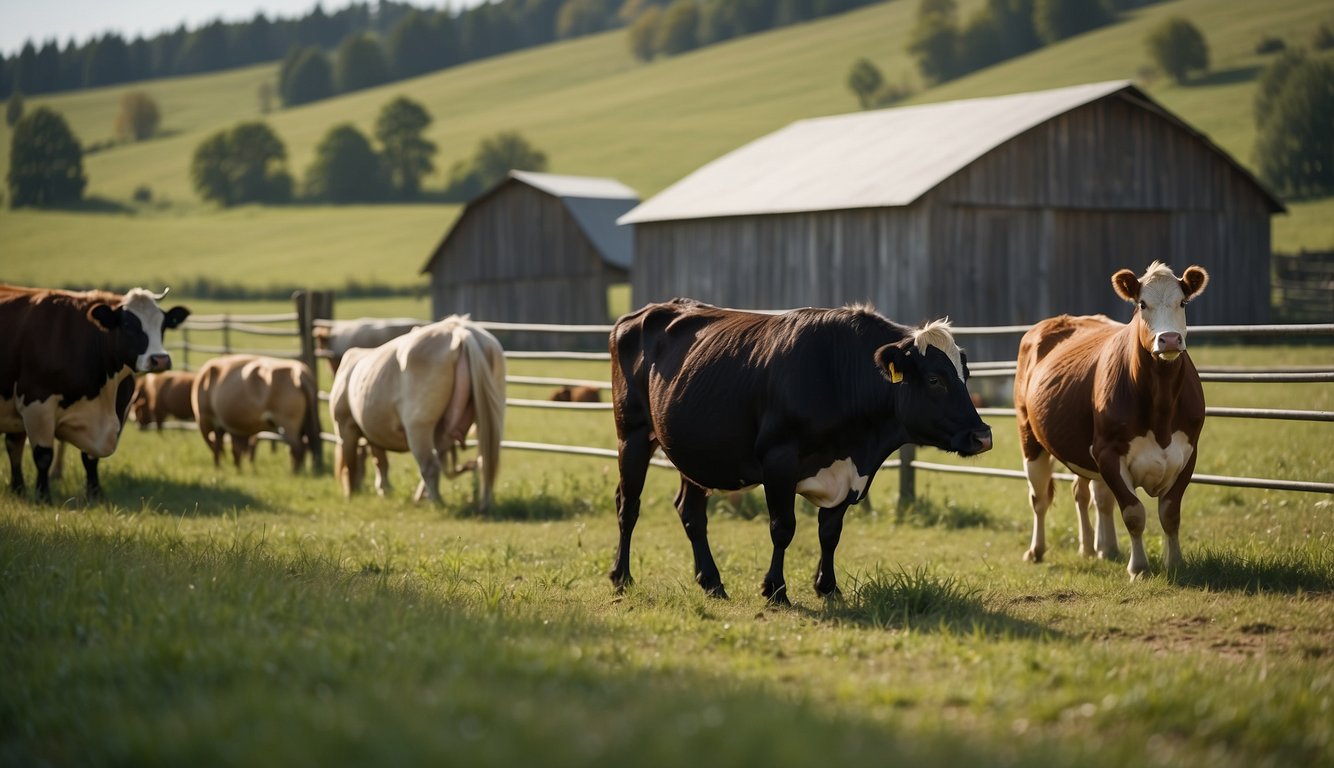
Starting your journey into livestock raising is all about informed choices and proper preparations. From picking breeds suited to your goals to understanding the fundamentals of animal care, setting up secure living areas, and defending against predators, you’ll need to tackle each aspect methodically.
Choosing the Right Breeds for Your Homestead
To ensure success on your homestead, you must select breeds that align with your climate, available space, and food security goals. For example:
- Goats like Nubians are great for both milk and meat.
- Sheep breeds such as the Dorper are low-maintenance and good for meat.
- Chickens like the Plymouth Rock can be dual-purpose, for both eggs and meat.
Consider the resources you’ve got and pick breeds renowned for their adaptability and resilience.
Essentials of Animal Husbandry
Proper care for your animals is non-negotiable for a thriving homestead:
- Nutrition: Ensure a balanced diet — each breed has specific needs.
- Health: Regular check-ups and vaccinations to prevent diseases.
- Breeding: Understand your breeds’ reproductive habits for effective planning.
Husbandry skills are vital for sustainable livestock management.
Building Shelters and Fencing
Secure shelters protect your animals from elements and ensure their comfort:
- Create well-ventilated, dry structures to keep livestock healthy.
- Fencing is critical. Options include:
Type Use-case Electric Temporary or rotational grazing Barbed wire Permanent perimeters for cattle Woven wire Versatile containment for various livestock
Factor in your specific breeds‘ requirements when constructing these spaces.
Preventing and Dealing with Predators
Livestock is vulnerable to predators, and you’ll need proactive strategies.
- Identify local predators: Wolves, coyotes, birds of prey, and foxes differ in how they might attack.
- Implement deterrents: Guard animals, secure fencing, and sound/light alarms can prevent losses.
- Regularly inspect and maintain barriers to deter skillful intruders.
Raising Chickens for Beginners
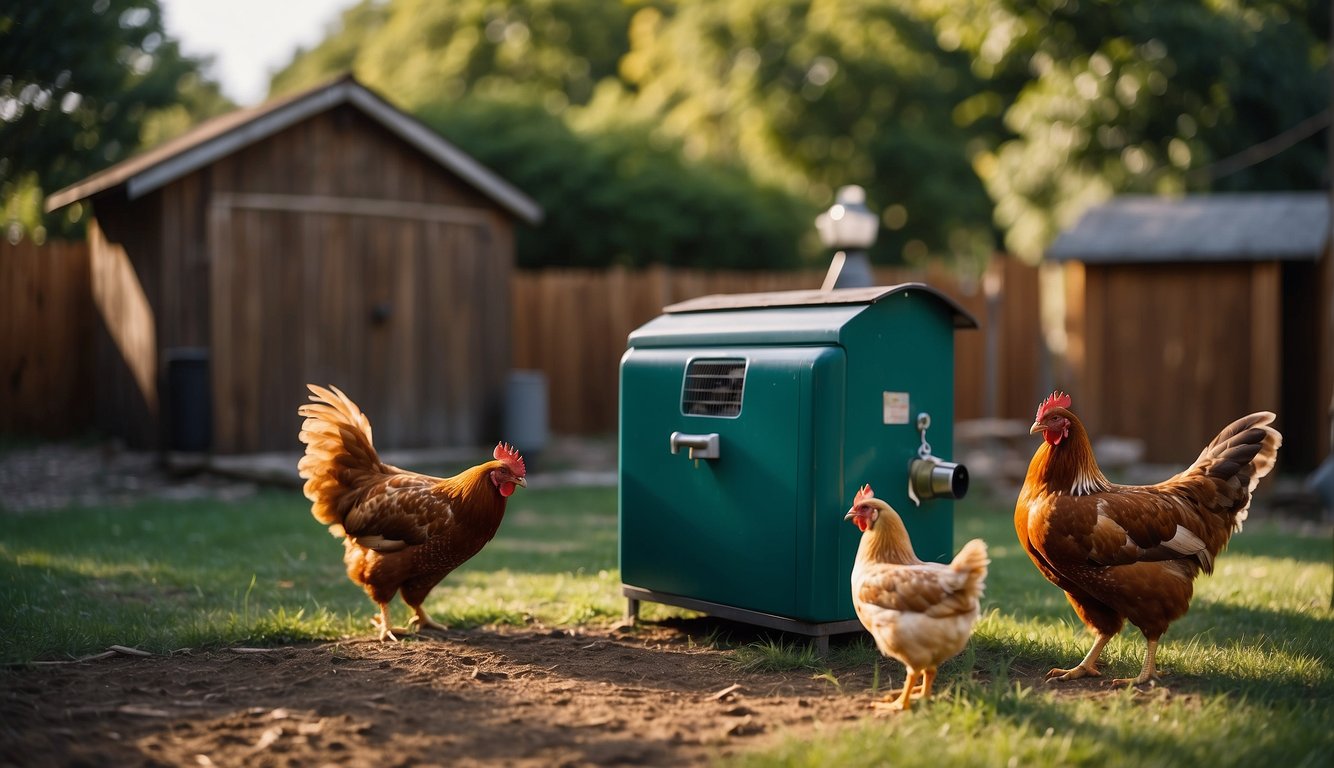
Starting with chickens can set a solid foundation for food security. You’ll find these birds are cost-effective and manageable, even if you’re a novice. Dive into their care, and you’ll get the hang of it quickly—here’s what you need to know.
Feeding and Nutrition
Your chickens’ diet directly affects their health and egg production. They require a balance of carbohydrates, proteins, fats, vitamins, and minerals. Start with a quality starter feed for chicks, rich in proteins to fuel their growth. As they mature, switch to a layer feed for optimal egg production. Always ensure they have access to clean water.
A simple feeding guide:
- Chicks (0-6 weeks): Starter feed with 20-24% protein
- Pullets (6-20 weeks): Grower feed with 16-18% protein
- Laying hens: Layer feed with 15-18% protein and added calcium
Egg Production and Incubation
Expect your hens to start laying eggs at around 6 months. The frequency of laying can vary, but most hens average 1 egg per day. Provide them with a comfortable nesting box where they can lay eggs securely. If you’re interested in hatching chicks, maintain a steady temperature of 99.5°F and humidity around 50-55% in your incubator. Turn the eggs thrice a day for the first 18 days then increase humidity to 65% and stop turning for the final days of incubation.
Health and Wellness of Chickens
Keep your flock thriving by maintaining a clean coop to prevent disease. Regularly check for lice, mites, and other pests. If you notice behavioral changes or signs of illness, consult a vet. Remember, a happy chicken is a productive one. Give them space to roam, scratch, and dust bathe for their well-being.
The Importance of Goats
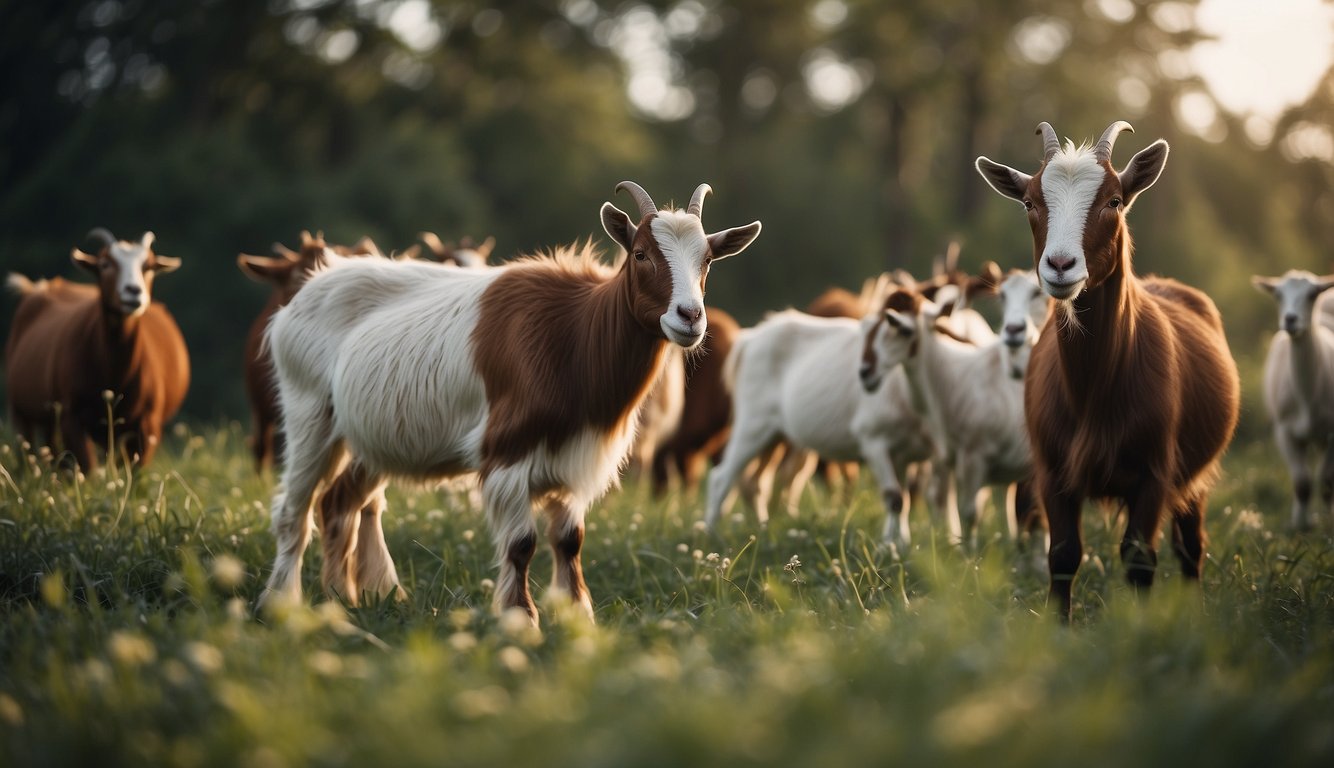
Raising goats can significantly boost your food security with benefits like diverse dairy products, a supply of meat, and adaptability to varied homestead environments.
Goat Breeds and Their Benefits
When you’re selecting goats for your homestead, pay attention to breed characteristics. Some breeds, such as the Nubian and Saanen, excel in milk production, while others like the Boer are prized for their meat. Pygmy goats are smaller and manage well in various climates, making them versatile for both dairy and meat.
- Nubian: High butterfat milk, good for cheese.
- Saanen: Prolific milkers, calm temperament.
- Boer: Fast growth, high-quality meat.
- Pygmy: Hardy, good in diverse climates, dual-purpose.
Milk Production and Processing
Goat milk is nutritious and can be transformed into various dairy products. Ensuring access to pasture can increase milk quality and quantity. You’ll need to routinely milk your goats, ideally twice daily. This milk can be processed into:
- Cheese
- Yogurt
- Kefir
The key to quality dairy products is cleanliness during the milking and processing stages to prevent contamination.
Goat Care and Management
Your goats need a well-planned diet, which should include long fiber hay for proper digestion. Shelter and health care also play crucial roles in herd management. Parasite control and hoof care are routine parts of goat maintenance. Providing goats with a suitable environment and attentive care will ensure they remain productive assets on your homestead.
- Shelter: Protection from elements, dry bedding.
- Diet: Balanced nutrition with access to fresh water.
- Health: Regular vet check-ups, vaccinations, deworming.
Raising Larger Livestock

Raising larger livestock like cattle, pigs, and sheep requires a sound strategy to ensure you get the best out of your meat production. Your livestock management skills will be essential to achieve resilience in food security.
Managing Cattle for Beef and Milk
For cattle, selecting the right breed is crucial for your goals: Beef breeds like Angus or Hereford are renowned for meat, while a breed like Holstein excels in milk production. It’s a balance of providing quality feed, ample space, and regular vet check-ups to keep them thriving.
- Feeding: Offer a mixed diet including forages, grains, and minerals.
- Housing: Ensure shelter from extreme weather and adequate roaming space.
- Health Care: Keep up with vaccinations and regular health monitoring.
Pigs: Fattening and Breeding
Pigs are efficient converters of feed into meat, making them a staple in homestead livestock ventures. You’ll want to focus on both fattening for meat and breeding, if you plan to sustain your pig production.
- Breeds: Choose breeds like Duroc or Yorkshire for robust meat production.
- Diet: High-calorie feeds are key for fattening; supplement with kitchen scraps.
- Space: Pigs need a clean, spacious pen with a wallow and shelter.
Sheep and Their Multiple Uses
Sheep ensure a diverse yield: meat, wool, and even milk. They’re a multi-purpose asset, especially for small-scale operations.
- Breed Selection: Merino for wool, Suffolk for meat, and East Friesian for milk.
- Pasture Management: Rotate grazing areas to maintain grass and avoid overgrazing.
- Shearing: Regular shearing not only provides wool but also benefits the sheep’s health.
Alternative Livestock and Exotics
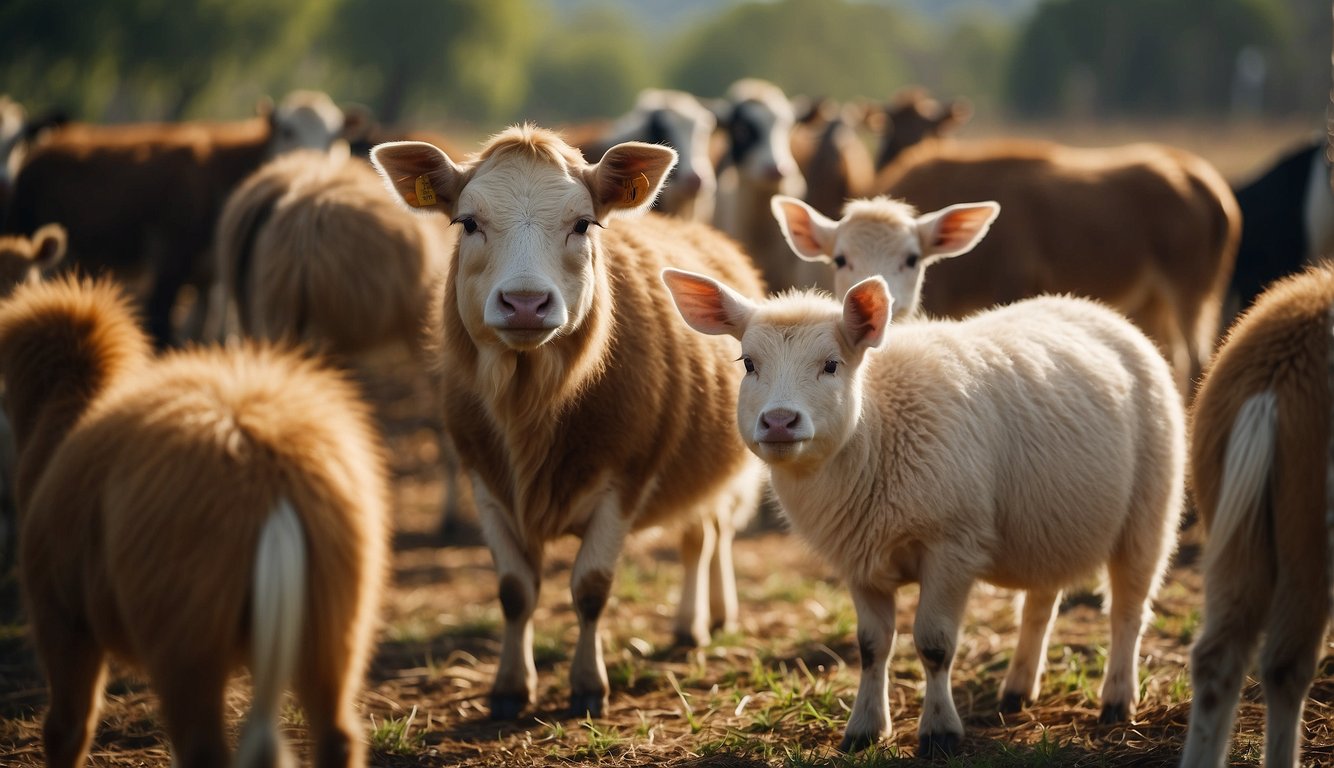
When you’re prepping for food security, consider diversifying with less common livestock. Raising animals like llamas and keeping bees can bolster your food supply and sustainability.
Raising Llamas and Alpacas
Llamas and alpacas are a smart choice for alternative livestock because they’re hardy and versatile. You can use their wool for clothing and their dung for fertilizer, adding a layer of self-sufficiency to your homestead. These creatures are also effective guard animals for other livestock, helping protect your food source during a natural disaster. Here’s a quick rundown:
- Space: Llamas and alpacas need less space than cattle.
- Food: They graze on grass and can thrive on poorer pastures.
- Care: Routine care includes shearing, hoof trimming, and vaccinations.
The Role of Bees in Homestead
Keeping bees is a game changer for your food sustainability. These little insects not only provide you with honey but also contribute to a better yield of fruits and vegetables through pollination. In the event of a natural disaster, having your own pollinators can be a critical component to maintaining a food supply. Here’s a snapshot:
- Pollination: Vital for the success of your gardens and orchards.
- Honey: A sustainable sweetener with a long shelf life.
- Wax: Useful for making candles, balms, and more.
Self-Sufficiency Beyond Livestock
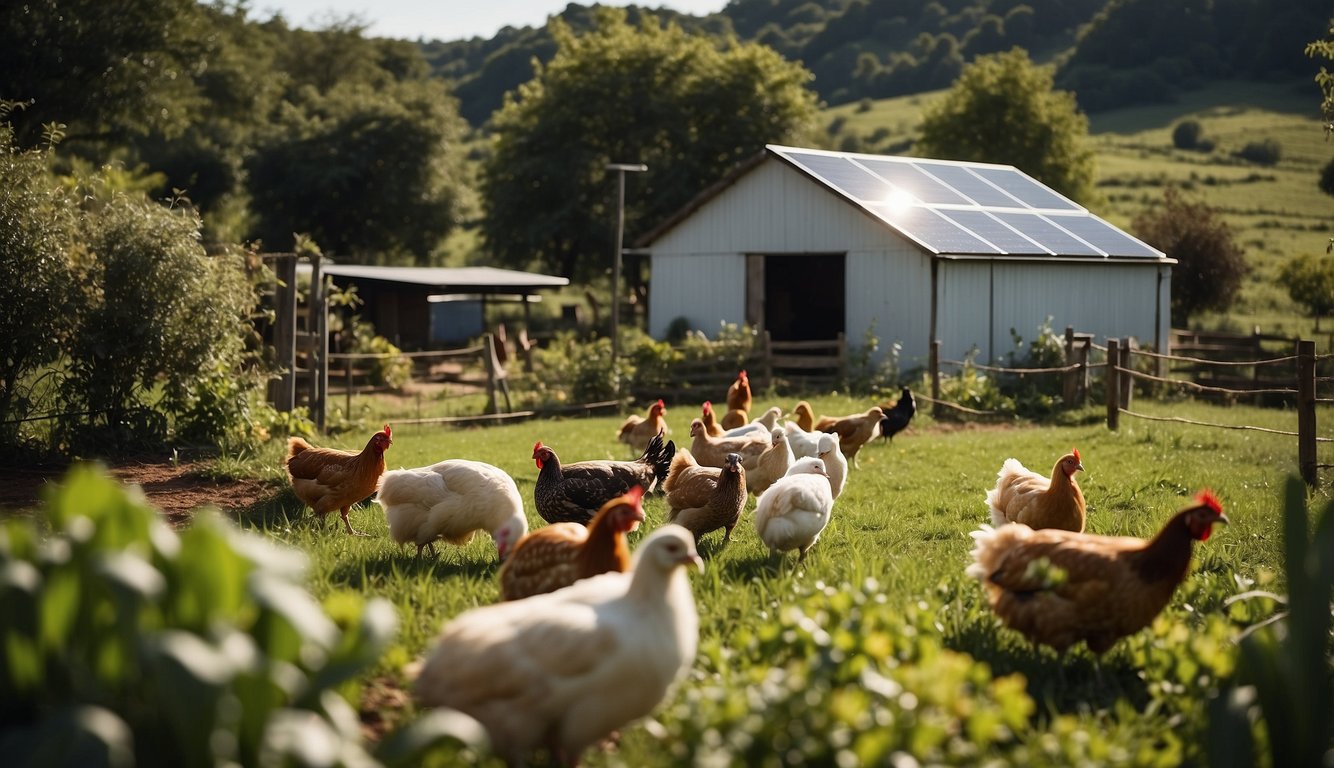
While raising animals is a solid step towards self-reliance, your food security plan should also include plant-based provisions and knowledge of local flora. Diversify your self-sufficiency with gardening, foraging, and preservation techniques to ensure a well-rounded supply.
Gardening for Your Kitchen Table
Start small but think big. You can grow vegetables, fruits, and herbs right in your backyard. Tomatoes, lettuce, and peppers are great for beginners and can really boost your farm-to-table experiences.
- Plan your space: Ensure adequate sunlight and good soil.
- Choose plants wisely: Consider what you love to eat and what grows well in your area.
- Learn maintenance: Regular watering and pest control are key.
Foraging: Wild Food on Your Land
Foraging can be a delightful treasure hunt for edibles like berries, nuts, and mushrooms. It’s vital to educate yourself about what’s safe to eat and what’s not—mistakes can be dangerous.
- Get a local foraging guidebook.
- Learn to recognize at least five edible plants native to your region.
- Harvest sustainably by taking only what you need.
Food Preservation Techniques
Storing food effectively increases the shelf life of your garden’s bounty and foraged finds. Here are some basics:
| Bold | Italics |
|---|---|
| Canning | Ideal for fruits, vegetables, and sauces. |
| Drying | Works great for herbs, some fruits, and meats. |
| Pickling | A tangy option for various vegetables. |
- Essentials for canning: Jars, lids, a water bath canner.
- Drying can be as simple as using the sun or an electric dehydrator.
- Vinegar, water, and salt are pickling must-haves.
Planning for the Unplanned

When it comes to survival, your best bet is to have a solid plan for your livestock that addresses natural disasters and food security. Let’s break down what you need to focus on to bolster your resilience in face of the unforeseen.
Preparing for Natural Disasters
Natural disasters, whether it’s a flood, earthquake, or storm, can throw a wrench into the smooth running of your livestock operations. To safeguard your animals, you should:
- Identify potential risks in your area and create a detailed emergency plan for each scenario.
- Construct sturdy shelters that can withstand severe weather conditions, and ensure that they’re easily accessible.
- Keep a well-stocked emergency kit that includes veterinary supplies, feed, and water for several days.
Securing a Reliable Food Supply
Securing a reliable food supply is vital to your survival strategy. Achieving this involves:
- Cultivating fodder: Grow your own feed, such as hay or silage, to reduce dependency on external sources.
- Establish a rotational grazing system to maintain soil health and provide your livestock with nutrition year-round.
- Store surplus feed properly to ensure you have enough to last through tough times or unexpected events.
Community and Marketing

In the realm of food security, connecting with your local food community and effectively marketing your farm-to-table products are crucial for your success.
Engaging with the Local Food Community
Getting involved with your local community can put you right at the heart of the farm-to-table movement. Attend local farmers’ markets and agricultural fairs to network with fellow producers and customers. Join or create groups — perhaps a cooperative or a CSA (Community Supported Agriculture) program — to share resources, knowledge, and support. This interaction not only strengthens community bonds but also fosters a resilient local food system.
- Community Events: Increase visibility by participating in community events.
- Workshops: Offer workshops at your farm to educate and engage with the public.
- Community Boards: Post about your business on community boards, both physical and digital, to draw in local support.
Marketing Your Farm-to-Table Products
Your marketing efforts should tell the story of your farm and the quality of your products. Make use of social media platforms to showcase your farming practices, highlight the freshness of your offerings, and to inform customers about the availability of products. Consider setting up a website where customers can learn more about your farm and possibly make purchases or place orders.
- Social Media: Regular posts to platforms like Instagram or Facebook can attract a following.
- E-Commerce: If applicable, sell your products through an online store.
- Email Newsletters: Keep your community informed with updates, deals, and educational content.
Craft a brand that reflects the values of the farm-to-table ethos and resonates with the world outside your farm. Authenticity in your marketing efforts will draw customers who value transparency and the quality of locally sourced food.
Homestead Economics
When you’re diving into homesteading, your economics are split into two major areas: budgeting for the initial setup and ongoing costs, and understanding the potential revenue from your operations. Let’s get your numbers straight so your livestock venture can thrive sustainably.
Budgeting for Your Livestock
First up, you’ve got to plan your spending. Budgeting isn’t just about the day-one costs; you’re in this for the long haul.
- Initial Costs: These include purchasing the animals, housing (like barns or coops), fencing, feeders, and waterers.
- Ongoing Costs: Regular expenses such as feed, medical care, bedding, and maintenance of facilities.
| Item | Estimated Cost |
|---|---|
| Chickens (each) | $1.50 – $3.70 |
| Goats (per head) | $50 – $300 |
| Coop/Fencing | $500 – $1000 |
| Feed (monthly) | $20 – $40 per animal |
Remember, prices can vary, so it’s a good idea to shop around and consider second-hand options where possible.
Understanding Costs and Revenue
Next, let’s look at how you’ll make the economics work in your favor.
- Product Sales: Eggs, milk, and meat are your primary sellable goods. Keep track of market prices.
- Byproducts: Don’t forget that manure can be sold as fertilizer and hides can be used or sold.
| Product | Potential Revenue (per unit) |
|---|---|
| Eggs | $2 – $4 per dozen |
| Goat’s Milk | $8 – $15 per gallon |
| Manure | $5 – $10 per bag |
Conclusion
Raising livestock as a prepper is about securing your food supply and achieving self-reliance. You’ve seen that proper planning and understanding are crucial for success. Choosing the right breeds and practicing sustainable management are not suggestions, but necessities if you aim to keep your homestead running smoothly and your table stocked with nutritious food.
Implement these steps to ensure you’re on the right path:
- Select Livestock Wisely: Focus on animals that fit your climate and resources.
- Master the Basics: Get comfortable with animal husbandry and day-to-day care.
- Plan for Health: Keep a vet on speed dial and maintain a medical supplies kit.
- Prepare for Challenges: Have contingency plans for extreme weather and emergencies.

Leave a Reply